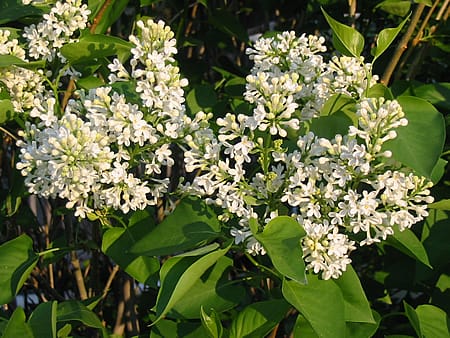|

Lilacs require full sun for maximum bloom, except for areas of
the hottest sun, where it needs partial sun. They prefer a
slightly alkaline soil (pH 7.5). When they are planted in
strongly acidic soil, lime should be cultivated into the soil
beneath the drip line to adjust the pH.
Most Lilacs require a
pronounced winter chilling period. Mild winters may cause these
plants to fail to bloom the following year, so in areas where
there isn't a 'defined' chill which comes with winter, you
should grow one of the "Descanso hybrids' which were developed
to eliminate the problem.
When your lilac finishes
blooming, prune the spent flowers back to the point just above
where the new buds are forming. Dead or damaged stems should be
cut off, and a few of the oldest stems should be cut back to the
ground. Heavy pruning will result in the loss much of next years
bloom, because next years flowers are formed on the plant this
year. Don't get carried away when you are pruning. |